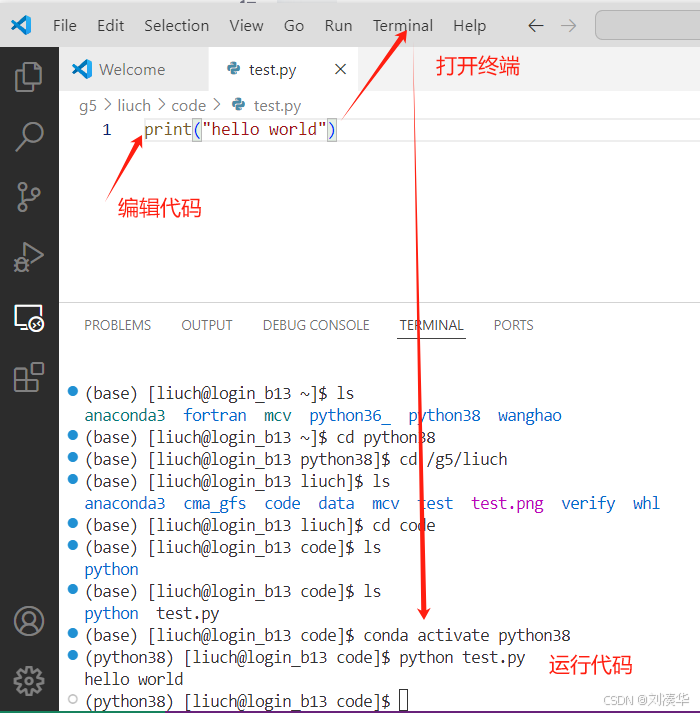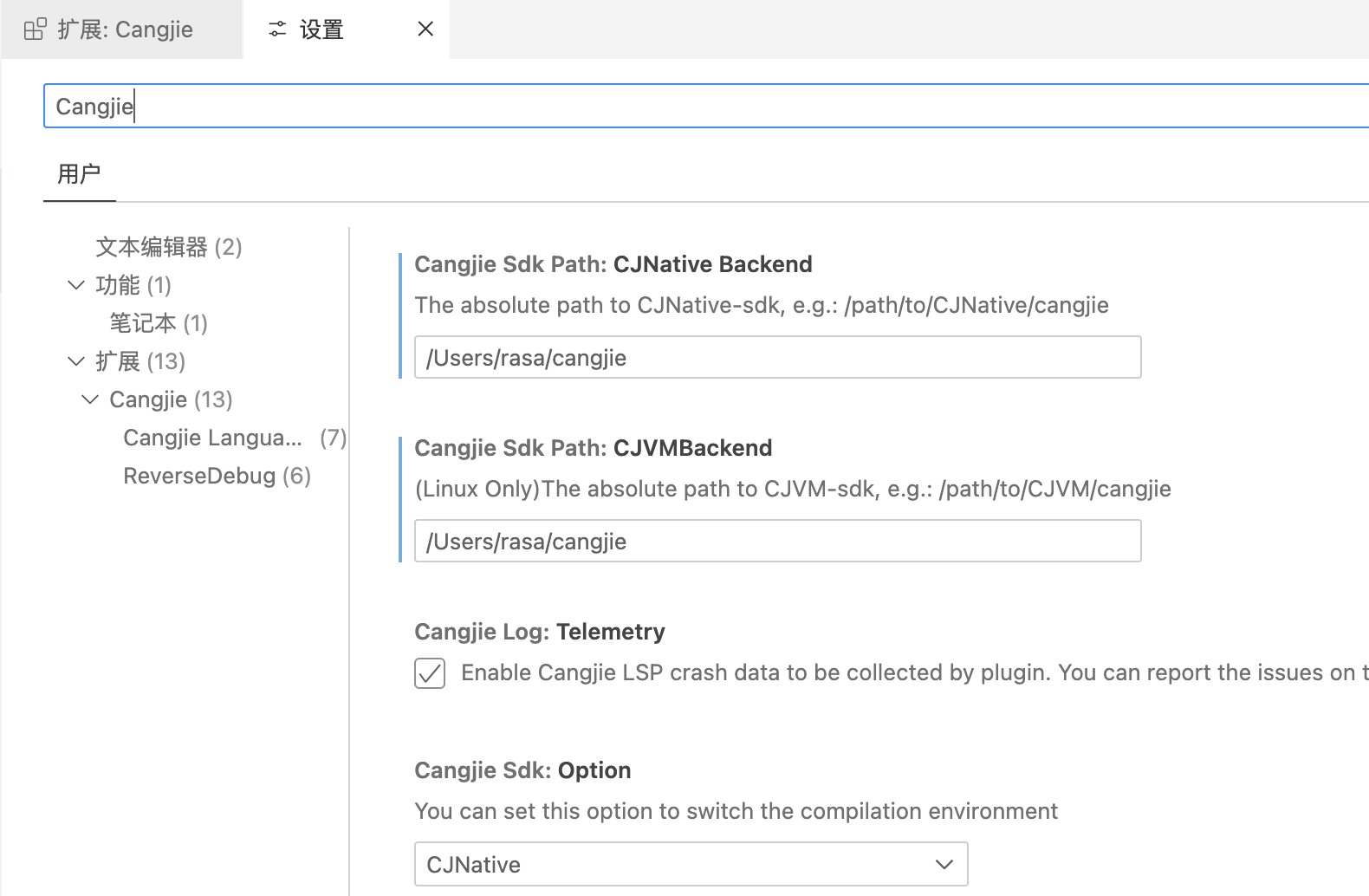linux,搭建Nginx服务器
1.环境准备
主机名 IP地址 角色
client eth0:192.168.88.10/24 客户端
proxy eth0:192.168.88.5/24
eth1:192.168.99.5/24 web服务器
web1 eth1:192.168.99.100/24 /
web2 eth1:192.168.99.200/24 /
2.实验要求
在proxy主机上安装部署Nginx服务,并可以将Nginx服务器,要求编译时启用如下功能:
支持SSL加密功能
设置Nginx账户及组名称均为nginx
客户端访问页面验证Nginx Web服务器
使用浏览器访问
使用curl访问
构建Nginx服务器
1)使用源码包安装nginx软件包
情况一,教室环境:
将linux真机中的lnmp_soft.tar.gz 传入虚拟机proxy的root家目录
[root@server1 ~]# scp /linux-soft/s2/wk/lnmp_soft.tar.gz 192.168.88.5:/root
情况二,非教室环境:
使用WindTerm或MobaXterm等工具把软件包拖拽到自己的环境中
[root@proxy ~]# yum -y install gcc make pcre-devel openssl-devel #安装编译工具,正则表达式依赖包,SSL加密依赖包
[root@proxy ~]# tar -xf /root/lnmp_soft.tar.gz
[root@proxy ~]# cd lnmp_soft/
[root@proxy ~]# tar -xf nginx-1.22.1.tar.gz
[root@proxy lnmp_soft]# cd nginx-1.22.1/
[root@proxy nginx-1.22.1]# ./configure --prefix=/usr/local/nginx --user=nginx --group=nginx --with-http_ssl_module #指定安装路径,指定用户,指定组,开启SSL加密功能
[root@proxy nginx-1.22.1]# make #编译
[root@proxy nginx-1.22.1]# make install #安装
[root@proxy nginx-1.22.1]# cd /usr/local/nginx/
[root@proxy nginx]# ls
conf html logs sbin
目录说明:
conf 配置文件目录
sbin 主程序目录
html 网站页面目录
logs 日志目录
2)启动nginx
[root@proxy nginx]# useradd nginx -s /sbin/nologin
[root@proxy nginx]# /usr/local/nginx/sbin/nginx #启动服务
nginx服务默认通过80端口监听客户端请求
[root@proxy nginx]# ss -antlp | grep 80
tcp LISTEN 0 128 0.0.0.0:80 0.0.0.0:* users:(("nginx",pid=7681,fd=6),("nginx",pid=7680,fd=6))
ss命令可以查看系统中启动的端口信息,该命令常用选项如下:
-a显示所有端口的信息
-n以数字格式显示端口号
-t显示TCP连接的端口
-u显示UDP连接的端口
-l显示服务正在监听的端口信息,如httpd启动后,会一直监听80端口
-p显示监听端口的服务名称是什么(也就是程序名称)
nginx命令其他命令:
[root@proxy nginx]# /usr/local/nginx/sbin/nginx -V #查看软件信息
[root@proxy nginx]# /usr/local/nginx/sbin/nginx -s reload #重新加载配置文件
[root@proxy nginx]# /usr/local/nginx/sbin/nginx -s stop #关闭服务
3)客户端访问测试
Nginx服务默认首页文档存储目录为/usr/local/nginx/html/,在此目录下默认有一个index.html的文件
命令行访问:
[root@proxy nginx]# /usr/local/nginx/sbin/nginx
[root@client ~]# curl http://192.168.88.5
<html>
<head>
<title>Welcome to nginx!</title>
</head>
...
浏览器访问:
真机浏览器访问192.168.88.5
定义测试页面
1)测试网站自定义页面
[root@proxy nginx]# echo "abc-test~" > html/abc.html #创建新页面
[root@client ~]# curl 192.168.88.5/abc.html #客户端访问新页面
abc-test~
真机浏览器访问:192.168.88.5/abc.html #如果无效,可以按ctrl+f5强制刷新
2)测试成品网站页面
[root@proxy nginx]# yum -y install unzip #安装解压缩工具
[root@proxy nginx]# unzip /root/lnmp_soft/www_template.zip #解压缩网站模板
[root@proxy nginx]# cp -r www_template/* html/ #拷贝网站模板文件到nginx的网页目录,如果有覆盖提示就输入 y 回车
cp: overwrite 'html/index.html'? y
真机浏览器访问192.168.88.5二、用户认证
实验要求
沿用前一个实验,调整Nginx服务端配置,实现以下目标:
访问nginx的Web页面需要进行用户认证
用户名为:tom,密码为:123456
修改Nginx配置文件
1)修改nginx.conf,开启认证功能
[root@proxy nginx]# vim /usr/local/nginx/conf/nginx.conf
.. ..
server {
listen 80;
server_name localhost;
auth_basic "Input Password:"; #新添加,认证提示符信息
auth_basic_user_file "/usr/local/nginx/pass"; #新添加,认证的密码文件
...
location / {
root html;
index index.html index.htm;
}
}
2)生成密码文件,创建用户及密码
使用htpasswd命令创建账户文件,需要确保系统中已经安装了httpd-tools
[root@proxy nginx]# yum -y install httpd-tools #如果已经安装,则不需要执行安装命令
[root@proxy nginx]# htpasswd -c /usr/local/nginx/pass tom #创建密码文件,-c新创建
New password: #密码123456
Re-type new password: #密码123456
Adding password for user tom
3)重新加载配置
[root@proxy nginx]# /usr/local/nginx/sbin/nginx -s reload #重新加载配置文件
#请先确保nginx是启动状态,否则运行该命令会报错,报错信息如下:
#[error] open() "/usr/local/nginx/logs/nginx.pid" failed (2: No such file or directory)
浏览器测试
访问192.168.88.5,会出现一个登录的界面,输入用户名/密码:tom/123456登录即可
1)追加账户
[root@proxy nginx]# htpasswd /usr/local/nginx/pass alice #追加用户,不使用-c选项
New password: #密码123456
Re-type new password: #密码123456
Adding password for user alice
[root@proxy ~]# cat /usr/local/nginx/pass三、基于域名的虚拟主机
实验要求
配置基于域名的虚拟主机,实现两个基于域名的虚拟主机,域名分别为www.a.com和www.b.com
修改配置文件
1)修改Nginx服务配置
添加相关虚拟主机配置如下
[root@proxy nginx]# cp conf/nginx.conf.default conf/nginx.conf #还原配置文件
[root@proxy nginx]# vim conf/nginx.conf
...
http {
.. ..
server {
listen 80; #端口
server_name www.b.com; #定义虚拟主机域名
location / {
root html_b; #指定网站根路径
index index.html index.htm; #默认页面
}
}
server {
listen 80; #端口
server_name www.a.com; #定义虚拟主机域名
...
location / {
root html; #指定网站根路径
index index.html index.htm;
}
}
...
[root@proxy nginx]# /usr/local/nginx/sbin/nginx -s reload #重新加载配置文件
2)创建网站根目录及对应首页文件
[root@proxy nginx]# echo "nginx-A~~~" > html/index.html #创建a网站测试页
[root@proxy nginx]# mkdir html_b #创建b网站的目录
[root@proxy nginx]# echo "nginx-B~~~" > html_b/index.html #创建b网站测试页
client客户端测试
[root@client ~]# vim /etc/hosts #修改hosts文件添加ip和域名的映射关系
192.168.88.5 www.a.com www.b.com
[root@client ~]# curl www.a.com
nginx-A~~~
[root@client ~]# curl www.b.com
nginx-B~~~
如果想在linux中使用浏览器访问,同样在操作
[root@server1 ~]# vim /etc/hosts #修改hosts文件添加ip和域名的映射关系
192.168.88.5 www.a.com www.b.com
浏览器直接访问www.a.com 或 www.b.com 即可
扩展补充:
windows环境配置hosts文件
C:\Windows\System32\drivers\etc\hosts
然后用文本打开hosts,在最后添加
192.168.88.5 www.a.com www.b.com
如果hosts文件是只读,可以
右击hosts文件---属性---安全---编辑---users---完全控制打钩
其他类型的虚拟主机(选做)
1)基于端口的虚拟主机
[root@proxy nginx]# vim conf/nginx.conf
...
server {
listen 8080; #端口
server_name www.a.com; #域名
......
}
server {
listen 8000; #端口
server_name www.a.com; #域名
.......
}
...
[root@proxy nginx]# sbin/nginx -s reload #重新加载配置文件
client客户端测试
[root@client ~]# curl www.a.com:8080
nginx-B~~~
[root@client ~]# curl www.a.com:8000
nginx-A~~~
2)基于IP的虚拟主机(了解,无须操作)
[root@proxy nginx]# vim conf/nginx.conf
...
server {
listen 192.168.88.5:80; #IP地址与端口
server_name www.a.com; #域名
... ...
}
server {
listen 192.168.99.5:80; #IP地址与端口
server_name www.a.com;
... ...
}
...
[root@proxy nginx]# /usr/local/nginx/sbin/nginx -s reload #重新加载配置文件四、SSL虚拟主机
实验要求
配置基于加密网站的虚拟主机,实现以下目标:
该站点通过https访问
通过私钥、证书对该站点所有数据加密
加密算法说明
源码安装Nginx时必须使用--with-http_ssl_module参数,启用加密模块,对于需要进行SSL加密处理的站点添加ssl相关指令(设置网站需要的私钥和证书)
加密算法一般分为对称算法、非对称算法、信息摘要
对称算法有:AES、DES,主要应用在单机数据加密
非对称算法有:RSA、DSA,主要应用在网络数据加密
信息摘要:MD5、sha256,主要应用在数据完整性校验
[root@proxy nginx]# echo 123 > /root/test
[root@proxy nginx]# md5sum /root/test
[root@proxy nginx]# echo 1234 > /root/test #更改文件内容
[root@proxy nginx]# md5sum /root/test #md5值已经发生变化
配置SSL虚拟主机
1)修改Nginx配置文件,设置加密网站的虚拟主机
[root@proxy nginx]# cp conf/nginx.conf.default conf/nginx.conf #还原配置文件
[root@proxy nginx]# vim /usr/local/nginx/conf/nginx.conf
...
server {
listen 443 ssl; #监听端口443,ssl使用安全加密技术
server_name localhost;
ssl_certificate cert.pem; #这里是证书文件
ssl_certificate_key cert.key; #这里是私钥文件
ssl_session_cache shared:SSL:1m;
ssl_session_timeout 5m;
ssl_ciphers HIGH:!aNULL:!MD5;
ssl_prefer_server_ciphers on;
location / {
root https; #加密网站根目录,更改,也可以自行定义
index index.html index.htm;
}
}
...
2)生成私钥与证书
[root@proxy nginx]# openssl genrsa > conf/cert.key #生成私钥,放到cert.key文件
[root@proxy nginx]# openssl req -x509 -key conf/cert.key > conf/cert.pem #-x509格式,生成证书,生成过程会询问诸如你在哪个国家之类的问题,可以随意回答
Country Name (2 letter code) [XX]:dc #国家名
State or Province Name (full name) []:dc #省份
Locality Name (eg, city) [Default City]:dc #城市
Organization Name (eg, company) [Default Company Ltd]:dc #公司
Organizational Unit Name (eg, section) []:dc #部门
Common Name (eg, your name or your server's hostname) []:dc #服务器名称
Email Address []:dc@dc.com #电子邮件
[root@proxy nginx]# /usr/local/nginx/sbin/nginx -s reload #重新加载配置文件
[root@proxy nginx]# mkdir https #创建安全网站的目录
[root@proxy nginx]# echo "nginx-https~" > https/index.html #创建安全网站的页面
3)客户端验证
命令行测试
[root@client ~]# curl -k https://192.168.88.5 #检验,-k是忽略安全风险
nginx-https~ #看到这个内容就说明实验成功
真机浏览器访问:https://192.168.88.5一、搭建Nginx服务器
环境准备
主机名 IP地址 角色
client eth0:192.168.88.10/24 客户端
proxy eth0:192.168.88.5/24
eth1:192.168.99.5/24 web服务器
web1 eth1:192.168.99.100/24 /
web2 eth1:192.168.99.200/24 /
按照上述要求创建虚拟机,并配置ip地址
[student@server1 ~]# sudo -i #切换到root管理员操作
[root@server1 ~]# vm clone client proxy web1 web2
[root@server1 ~]# vm setip client 192.168.88.10
[root@server1 ~]# vm setip proxy 192.168.88.5
[root@server1 ~]# vm setip proxy 192.168.99.5
[root@server1 ~]# vm setip web1 192.168.99.100
[root@server1 ~]# vm setip web2 192.168.99.200
windows环境的同学需要自行克隆虚拟机,配置ip,主机名等,永久关闭防火墙和selinux
实验要求
在proxy主机上安装部署Nginx服务,并可以将Nginx服务器,要求编译时启用如下功能:
支持SSL加密功能
设置Nginx账户及组名称均为nginx
客户端访问页面验证Nginx Web服务器
使用浏览器访问
使用curl访问
构建Nginx服务器
1)使用源码包安装nginx软件包
情况一,教室环境:
将linux真机中的lnmp_soft.tar.gz 传入虚拟机proxy的root家目录
[root@server1 ~]# scp /linux-soft/s2/wk/lnmp_soft.tar.gz 192.168.88.5:/root
情况二,非教室环境:
使用WindTerm或MobaXterm等工具把软件包拖拽到自己的环境中
[root@proxy ~]# yum -y install gcc make pcre-devel openssl-devel #安装编译工具,正则表达式依赖包,SSL加密依赖包
[root@proxy ~]# tar -xf /root/lnmp_soft.tar.gz
[root@proxy ~]# cd lnmp_soft/
[root@proxy ~]# tar -xf nginx-1.22.1.tar.gz
[root@proxy lnmp_soft]# cd nginx-1.22.1/
[root@proxy nginx-1.22.1]# ./configure --prefix=/usr/local/nginx --user=nginx --group=nginx --with-http_ssl_module #指定安装路径,指定用户,指定组,开启SSL加密功能
[root@proxy nginx-1.22.1]# make #编译
[root@proxy nginx-1.22.1]# make install #安装
[root@proxy nginx-1.22.1]# cd /usr/local/nginx/
[root@proxy nginx]# ls
conf html logs sbin
目录说明:
conf 配置文件目录
sbin 主程序目录
html 网站页面目录
logs 日志目录
2)启动nginx
[root@proxy nginx]# useradd nginx -s /sbin/nologin
[root@proxy nginx]# /usr/local/nginx/sbin/nginx #启动服务
nginx服务默认通过80端口监听客户端请求
[root@proxy nginx]# ss -antlp | grep 80
tcp LISTEN 0 128 0.0.0.0:80 0.0.0.0:* users:(("nginx",pid=7681,fd=6),("nginx",pid=7680,fd=6))
ss命令可以查看系统中启动的端口信息,该命令常用选项如下:
-a显示所有端口的信息
-n以数字格式显示端口号
-t显示TCP连接的端口
-u显示UDP连接的端口
-l显示服务正在监听的端口信息,如httpd启动后,会一直监听80端口
-p显示监听端口的服务名称是什么(也就是程序名称)
nginx命令其他命令:
[root@proxy nginx]# /usr/local/nginx/sbin/nginx -V #查看软件信息
[root@proxy nginx]# /usr/local/nginx/sbin/nginx -s reload #重新加载配置文件
[root@proxy nginx]# /usr/local/nginx/sbin/nginx -s stop #关闭服务
3)客户端访问测试
Nginx服务默认首页文档存储目录为/usr/local/nginx/html/,在此目录下默认有一个index.html的文件
命令行访问:
[root@proxy nginx]# /usr/local/nginx/sbin/nginx
[root@client ~]# curl http://192.168.88.5
<html>
<head>
<title>Welcome to nginx!</title>
</head>
...
浏览器访问:
真机浏览器访问192.168.88.5
定义测试页面
1)测试网站自定义页面
[root@proxy nginx]# echo "abc-test~" > html/abc.html #创建新页面
[root@client ~]# curl 192.168.88.5/abc.html #客户端访问新页面
abc-test~
真机浏览器访问:192.168.88.5/abc.html #如果无效,可以按ctrl+f5强制刷新
2)测试成品网站页面
[root@proxy nginx]# yum -y install unzip #安装解压缩工具
[root@proxy nginx]# unzip /root/lnmp_soft/www_template.zip #解压缩网站模板
[root@proxy nginx]# cp -r www_template/* html/ #拷贝网站模板文件到nginx的网页目录,如果有覆盖提示就输入 y 回车
cp: overwrite 'html/index.html'? y
真机浏览器访问192.168.88.5
二、用户认证
实验要求
沿用前一个实验,调整Nginx服务端配置,实现以下目标:
访问nginx的Web页面需要进行用户认证
用户名为:tom,密码为:123456
修改Nginx配置文件
1)修改nginx.conf,开启认证功能
[root@proxy nginx]# vim /usr/local/nginx/conf/nginx.conf
.. ..
server {
listen 80;
server_name localhost;
auth_basic "Input Password:"; #新添加,认证提示符信息
auth_basic_user_file "/usr/local/nginx/pass"; #新添加,认证的密码文件
...
location / {
root html;
index index.html index.htm;
}
}
2)生成密码文件,创建用户及密码
使用htpasswd命令创建账户文件,需要确保系统中已经安装了httpd-tools
[root@proxy nginx]# yum -y install httpd-tools #如果已经安装,则不需要执行安装命令
[root@proxy nginx]# htpasswd -c /usr/local/nginx/pass tom #创建密码文件,-c新创建
New password: #密码123456
Re-type new password: #密码123456
Adding password for user tom
3)重新加载配置
[root@proxy nginx]# /usr/local/nginx/sbin/nginx -s reload #重新加载配置文件
#请先确保nginx是启动状态,否则运行该命令会报错,报错信息如下:
#[error] open() "/usr/local/nginx/logs/nginx.pid" failed (2: No such file or directory)
浏览器测试
访问192.168.88.5,会出现一个登录的界面,输入用户名/密码:tom/123456登录即可
1)追加账户
[root@proxy nginx]# htpasswd /usr/local/nginx/pass alice #追加用户,不使用-c选项
New password: #密码123456
Re-type new password: #密码123456
Adding password for user alice
[root@proxy ~]# cat /usr/local/nginx/pass
三、基于域名的虚拟主机
实验要求
配置基于域名的虚拟主机,实现两个基于域名的虚拟主机,域名分别为www.a.com和www.b.com
修改配置文件
1)修改Nginx服务配置
添加相关虚拟主机配置如下
[root@proxy nginx]# cp conf/nginx.conf.default conf/nginx.conf #还原配置文件
[root@proxy nginx]# vim conf/nginx.conf
...
http {
.. ..
server {
listen 80; #端口
server_name www.b.com; #定义虚拟主机域名
location / {
root html_b; #指定网站根路径
index index.html index.htm; #默认页面
}
}
server {
listen 80; #端口
server_name www.a.com; #定义虚拟主机域名
...
location / {
root html; #指定网站根路径
index index.html index.htm;
}
}
...
[root@proxy nginx]# /usr/local/nginx/sbin/nginx -s reload #重新加载配置文件
2)创建网站根目录及对应首页文件
[root@proxy nginx]# echo "nginx-A~~~" > html/index.html #创建a网站测试页
[root@proxy nginx]# mkdir html_b #创建b网站的目录
[root@proxy nginx]# echo "nginx-B~~~" > html_b/index.html #创建b网站测试页
client客户端测试
[root@client ~]# vim /etc/hosts #修改hosts文件添加ip和域名的映射关系
192.168.88.5 www.a.com www.b.com
[root@client ~]# curl www.a.com
nginx-A~~~
[root@client ~]# curl www.b.com
nginx-B~~~
如果想在linux中使用浏览器访问,同样在操作
[root@server1 ~]# vim /etc/hosts #修改hosts文件添加ip和域名的映射关系
192.168.88.5 www.a.com www.b.com
浏览器直接访问www.a.com 或 www.b.com 即可
扩展补充:
windows环境配置hosts文件
C:\Windows\System32\drivers\etc\hosts
然后用文本打开hosts,在最后添加
192.168.88.5 www.a.com www.b.com
如果hosts文件是只读,可以
右击hosts文件---属性---安全---编辑---users---完全控制打钩
其他类型的虚拟主机(选做)
1)基于端口的虚拟主机
[root@proxy nginx]# vim conf/nginx.conf
...
server {
listen 8080; #端口
server_name www.a.com; #域名
......
}
server {
listen 8000; #端口
server_name www.a.com; #域名
.......
}
...
[root@proxy nginx]# sbin/nginx -s reload #重新加载配置文件
client客户端测试
[root@client ~]# curl www.a.com:8080
nginx-B~~~
[root@client ~]# curl www.a.com:8000
nginx-A~~~
2)基于IP的虚拟主机(了解,无须操作)
[root@proxy nginx]# vim conf/nginx.conf
...
server {
listen 192.168.88.5:80; #IP地址与端口
server_name www.a.com; #域名
... ...
}
server {
listen 192.168.99.5:80; #IP地址与端口
server_name www.a.com;
... ...
}
...
[root@proxy nginx]# /usr/local/nginx/sbin/nginx -s reload #重新加载配置文件
四、SSL虚拟主机
实验要求
配置基于加密网站的虚拟主机,实现以下目标:
该站点通过https访问
通过私钥、证书对该站点所有数据加密
加密算法说明
源码安装Nginx时必须使用--with-http_ssl_module参数,启用加密模块,对于需要进行SSL加密处理的站点添加ssl相关指令(设置网站需要的私钥和证书)
加密算法一般分为对称算法、非对称算法、信息摘要
对称算法有:AES、DES,主要应用在单机数据加密
非对称算法有:RSA、DSA,主要应用在网络数据加密
信息摘要:MD5、sha256,主要应用在数据完整性校验
[root@proxy nginx]# echo 123 > /root/test
[root@proxy nginx]# md5sum /root/test
[root@proxy nginx]# echo 1234 > /root/test #更改文件内容
[root@proxy nginx]# md5sum /root/test #md5值已经发生变化
配置SSL虚拟主机
1)修改Nginx配置文件,设置加密网站的虚拟主机
[root@proxy nginx]# cp conf/nginx.conf.default conf/nginx.conf #还原配置文件
[root@proxy nginx]# vim /usr/local/nginx/conf/nginx.conf
...
server {
listen 443 ssl; #监听端口443,ssl使用安全加密技术
server_name localhost;
ssl_certificate cert.pem; #这里是证书文件
ssl_certificate_key cert.key; #这里是私钥文件
ssl_session_cache shared:SSL:1m;
ssl_session_timeout 5m;
ssl_ciphers HIGH:!aNULL:!MD5;
ssl_prefer_server_ciphers on;
location / {
root https; #加密网站根目录,更改,也可以自行定义
index index.html index.htm;
}
}
...
2)生成私钥与证书
[root@proxy nginx]# openssl genrsa > conf/cert.key #生成私钥,放到cert.key文件
[root@proxy nginx]# openssl req -x509 -key conf/cert.key > conf/cert.pem #-x509格式,生成证书,生成过程会询问诸如你在哪个国家之类的问题,可以随意回答
Country Name (2 letter code) [XX]:dc #国家名
State or Province Name (full name) []:dc #省份
Locality Name (eg, city) [Default City]:dc #城市
Organization Name (eg, company) [Default Company Ltd]:dc #公司
Organizational Unit Name (eg, section) []:dc #部门
Common Name (eg, your name or your server's hostname) []:dc #服务器名称
Email Address []:dc@dc.com #电子邮件
[root@proxy nginx]# /usr/local/nginx/sbin/nginx -s reload #重新加载配置文件
[root@proxy nginx]# mkdir https #创建安全网站的目录
[root@proxy nginx]# echo "nginx-https~" > https/index.html #创建安全网站的页面
3)客户端验证
命令行测试
[root@client ~]# curl -k https://192.168.88.5 #检验,-k是忽略安全风险
nginx-https~ #看到这个内容就说明实验成功
真机浏览器访问:https://192.168.88.5


















